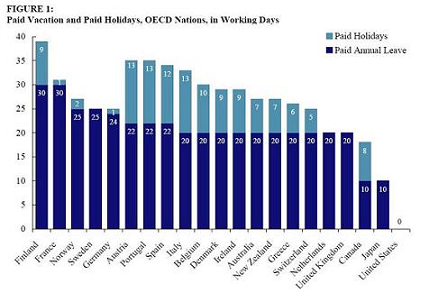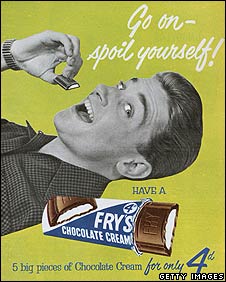
Jersey Shore has come to end, we’re (genuinely) sad to say. We know we had fun. But is it possible we also saw something, dare I say it, subversive about beauty, gender and sexuality? I think so.
A panel discussion on the show and “Guido culture” at Queens College yesterday (you read that right), included New York State Senator and Jezebel heroine Diane Savino, who knows from stinging cultural analysis.
[Savino] explained, “‘guido’ was never a pejorative.” It grew out of the greaser look and became a way for Italian-Americans who did not fit the standard of beauty to take pride in their own heritage and define cool for themselves.
When she was growing up, everybody listened to rock; girls were supposed to be skinny with straight blonde hair (like Marcia Brady on “The Brady Bunch”); guys wore ripped jeans, sneakers and straggly hair.
The 1977 film “Saturday Night Fever” marked a turning point. “It changed the image for all of us,” Ms. Savino said. As Tony Manero, John Travolta wore a white suit, had slicked short hair, liked disco music and was hot. “It was a way we could develop our own standard of beauty,” she added.

In the same way, Virginia Heffernan writes in this weekend’s New York Times Magazine, Italian-Americans in the Northeast originally disdained their own accents until movies like “Mean Streets, Saturday Night Fever, Working Girl and, of course, Taxi Driver.” Those representations, she says, led to a “hammy” reclamation of an identity that had been mirrored back to them through Hollywood. These were second and third generation immigrants, who had mostly reached the middle class but maybe didn’t feel wholly a part of the mainstream, who telegraphed their identity through stylized symbols like Italian flags and red sauce that felt potent but no longer limited their social mobility.
That goes for the ladies too. Female beauty that took on a showily “ethnic cast” was distinct from what was already being sold. As Regina Nigro recently put it on The Awl:
We (I) laugh at bon mots like “You don’t even look Italian!” (the insult that Sammi “Sweetheart” flings at the blonde blue-eyed “grenade” …) but, ridiculous as it is, that assessment betrays a value system: Skinny blonde pale WASP princesses are deemed not attractive when measured by the JS aesthetic. And this seems curious and laughable to us.
“You don’t even look Italian!” is crazy funny but is the underlying judgment (dark hair/olive skin/Italian-looking = pretty; the inverse = not pretty) any worse than any other standard of beauty? It’s an alternative perspective, one that I suspect is so funny partly because it is so unfamiliar.
Of course, there is plenty about the Jersey Shore sexual aesthetic that is broadly familiar. The worst insult is to call a woman fat (or a “hippo”); big, exposed boobs are a baseline requirement, and the men are judged by the attractiveness of the women they acquire. (The other guys repeatedly mock The Situation about the looks of the women he brings home; Ronnie taunts him that he hasn’t brought home a girl anywhere near as pretty as Sammi).
And yet it’s oddly refreshing how much artifice itself is celebrated, with everyone participating mightily, and openly, in becoming the ideal Guido. No one is just born one, or supposed to make it look effortless. There are communal visits to tanning salons and unblinking references to fake breasts, and everyone takes hours to get ready. Vinny describes a girl admiringly: “Fake boobs, nice butt, said she was a model.”
Heffernan, writing about regional accents being reinforced by the show, uses Sammi as an example: “Every part of Sweetheart’s identity – including her skin color, which on the show is not an inborn marker of ethnicity but a badge of achievement (in the tanning bed) – is the product of intense calculation.” And Heffernan didn’t even get to Sammi’s hair extensions, which are brandished for emphasis.
No character more desperately self-produces than The Situation and his third-person pronouncements. Men are not inscluded [sic] from all this ritual artifice. In the last episode, J-Woww practically goes into heat when she sees some “juicehead gorillas” on the beach, and she lists “Human Growth Hormone” among the attractions. This, by the way, leads The Situation to mumble defensively, “Big is out and lean is in.”

That’s because on The Jersey Shore, men’s bodies are just as scrutinized as women’s, and their beauty rituals are as elaborate, expensive, and time-consuming as those of the women. Maybe even more so — in addition to blowouts, tanning sessions, and agonizing over which appliqued shirt will set them apart from the gelled masses, they spend hours at the gym, something we never see the girls do.

As much as the cast performed all this around the clock during the show’s taping, the audition tapes seen here and in the video below are even more extreme, mixing ethnic calculation with the general famewhoring savviness reality producers have become accustomed to.
Looking at this through what we know now: Sammi calls herself a “hookup slut” but aside from a few flirtations, turned out to be conventionally monogamous on the show. Vinny, in straight-up costume, claims he has to take off his pants “to really show you the magic,” but turned out to be the mildest-mannered cast member, one who unashamedly adores his doting mother. Underneath playing to the producers, though, is a more personal kind of construction, and a more particular one. And ironically, although the cast members’ self-creation was one of the most entertaining parts of the show, some underlying sense of unembarrassed authenticity, even wholesomeness, made it most worth watching.
——————————
Irin Carmon is a reporter at Jezebel.com, from where we’re super pleased to have borrowed the post below. Her work has also appeared in the New York Times, Boston Globe, The Village Voice, and others; more information is at www.irincarmon.com.
If you would like to write a post for Sociological Images, please see our Guidelines for Guest Bloggers.










